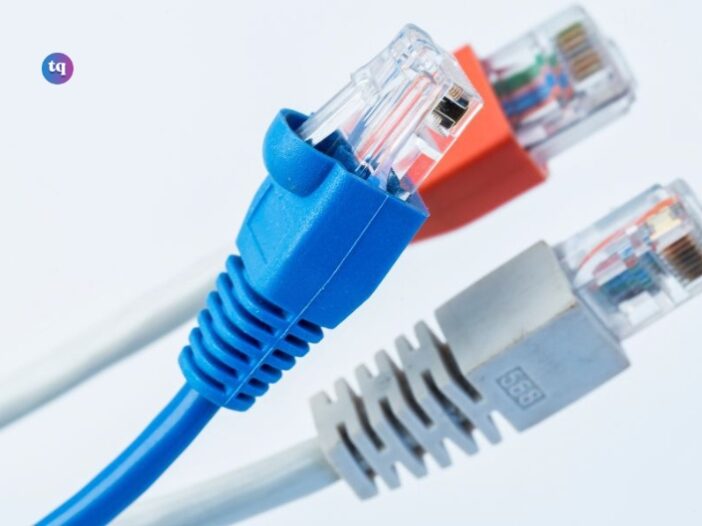
Ethernet has been around for a while, but its complexities leave people with plenty of questions. This is especially true when it comes to the type of Ethernet cables to use. Though many options exist, two popular choices are Cat6 and Cat6a. Below, we provide a breakdown of these related Ethernet cables to help you decide which, if either, is right for your needs.
Table of Contents
What Are Cat6 Cables?
Cat6 cables support data transfer speeds of 1 gigabit per second (gbps) over a maximum length of 100 meters. Cat6 cables can also support up to 10 gbps, but that is only up to 55 meters. They also offer a bandwidth capacity of 250 MHz, which is a significant improvement over their predecessors.
Known for their efficiency, Cat6 cables prove reliable in both residential and commercial networks, providing low noise and minimal signal interference.
Cat6 cables have additional insulation designed to reduce crosstalk, ultimately improving network stability and performance. This technical advancement ensures better connectivity for users needing stable, high-speed internet connections, such as gamers or professionals working with large data files.
What Are Cat6a Cables?
Stepping up from the standard Cat6, Cat6a cables promise even higher performance and speed. In fact, the added “a” stands for “augmented”! They support data transfer rates of up to 10 gbps with a bandwidth capacity reaching at least 500 MHz.
This means there are many benefits of installing Cat6a Ethernet cables in high-demand environments, such as data centers or enterprise networks. Their enhanced shielding reduces crosstalk and electromagnetic interference even more than Cat6 cables.
Cat6a cables feature a sturdier, thicker design with more tightly woven copper conductors, accommodating their superior performance. This also makes them larger and more challenging to install. However, if you’re running applications that require high bandwidth or expect to scale your operations, Cat6a offers a more future-ready option.
Is One Better Than the Other?
When you’re choosing the best Ethernet cable for your needs, you should evaluate your network demands most closely. You should know that for most home networks and small businesses, Cat6 cables deliver a satisfactory user experience. They’re powerful, affordable, and the modern standard. Your network needs very likely won’t exceed what Cat6 cables can accommodate.
That said, if you have high network demands or simply want to future-proof your setup, then Cat6a cables could be right for you. Their ability to manage higher data rates, coupled with reduced interference, makes them ideal for larger-scale operations or tech enthusiasts with future-proofing goals. Though more expensive and trickier to install, Cat6a cables will provide top-notch performance regardless of your needs.
Conclusion
Both Cat6 and Cat6a Ethernet cables have their place in the tech world. This breakdown shows that these Ethernet cables each offer unique advantages fit for supporting connectivity in the digital age. Ultimately, understanding your current and future network demands will guide you toward the right choice.